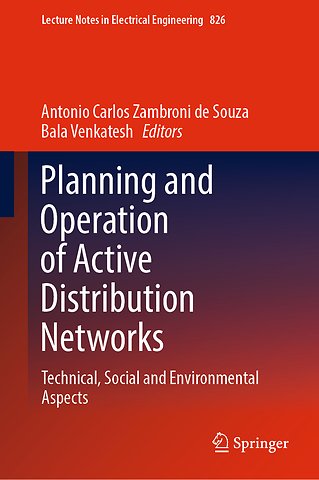Planning and Operation of Active Distribution Networks
Technical, Social and Environmental Aspects
Samenvatting
This book offers a broad and detailed view about how traditional distribution systems are evolving smart/active systems. The reader will be able to share the view of a number of researchers directly involved in this field. For this sake, philosophical discussions are enriched by the presentation of theoretical and computational tools. A senior reader may incorporate some concepts not available during his/her graduation process, whereas new Engineers may have contact with some material that may be essential to his/her practice as professionals.
Specificaties
Inhoudsopgave
<p>Chapter title</p>
<p>1</p>
<p>Introduction – Philosophy of new systems</p>
<p>2</p>
<p>Transition from old to new markets</p>
<p>3</p>
<p>Demand response</p>
<p>4</p>
<p>Smart grids enabling smart cities and urban energy planning</p>
<p>5</p>
<p>The role of electric vehicles in smart grids</p>
<p>6</p>
<p>Energy storage in different time scales </p>
<p>7</p>
<p>Optimal techniques applied to smart grids</p>
<p>8</p>
<p>Power flow in isolated and connected microgrids</p>
<p>9</p>
<p>Autonomy of isolated microgrids</p>
<p>10</p>
<p>Harmonic and hosting capacities</p>
<p>11</p>
<p>The evolution of smart metering </p>
<p>12</p>
<p>Communication requisites of smart grids</p>
<p>13</p>
<p>Fault location</p>
<p>14</p>
<p>The coming trends – what to expect</p>

